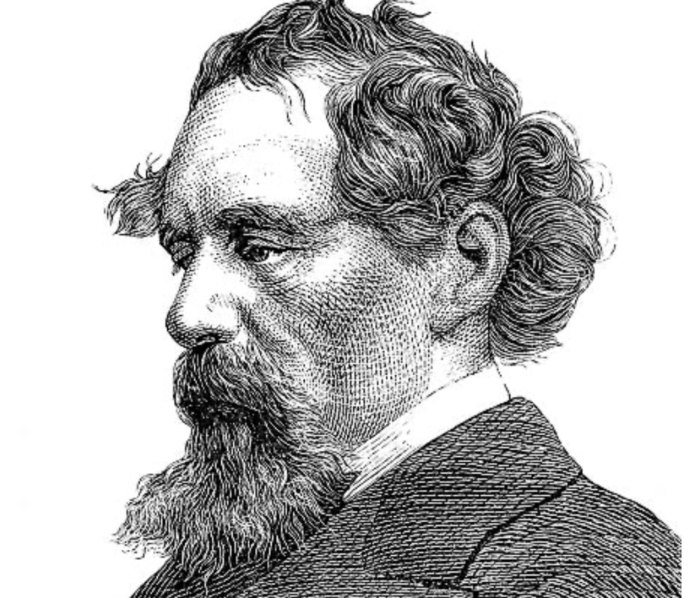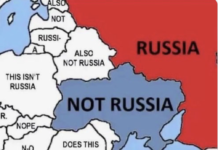For several years I have subscribed to the New York Review of Books which has been a literary delight. Its overall political orientation is not mine but this adds to rather than detracts from its intellectual appeal.
Unfortunately I have a backlog of unread issues and only recently read an article published on 19 August 2021 which caught my eye on a subject that I knew little about.
The author was Edward Chancellor who writes on financial matters. He is presently authoring a book on the history of ‘interest’; a subject I thought would be impossible to make interesting, But, if this published article is any indication, he may well succeed. The title of Chancellor’s paywalled article is Waiting to Deflate.
Chancellor begins his account (actually a review of two recent books on why people go mad in crowds and financial bubbles) with a three volume book published as far back as 1841 by Charles Mackay called Extraordinary Popular Delusions and the Madness of Crowds.
‘Tulip Mania’
Mackay begins with the ‘Tulip Mania’ (1634-37) in the Netherlands during its financial ‘golden age’ when contract prices for some bulbs of the recently introduced and fashionable tulip reached extraordinarily high levels until a dramatic collapse. He then takes the reader through a journey of witch mania, alchemists and the like.

Chancellor acknowledges that Mackay was not a “rigorous historian” (he earnt his living as a poet, song writer and journalist) who resorted to “outlandish legends”. Nevertheless, he maintains, Mackay can still be read for “pleasure and instruction” in the light of the many manias that followed. The two reviewed books take manias further right up to and including ISIS and recent financial bubbles.
For me the interesting point was when errors occur because individuals become overly influenced by what others think. The more a group interacts the more it behaves like a real crowd and the less accurate its assessments become and the more errors there are. This is described as ‘imitative behaviour’ which can led to delusional beliefs taking hold.
In Chancellor’s words “Manias are diseases of the mind. Popular delusions occur when appealing but baseless stories spread contagiously from one person to another.” We can see that right now with the extreme views of anti-vaccinators, especially when intertwined with or led by the political far right.
The completely false and unsubstantiated claims that Covid vaccines are killing New Zealand children or that the illness spreading among unvaccinated crowded protesters presently occupying Parliament grounds is due to electro-magnetic emissions (rather than the Covid-19 Omicron variant) are cases in point.
But there are also non-extreme examples in health policy decision-making. This is where collectivised interactions, including public assertions from those in positions of authority, become increasingly wrong reaching the level of popular delusion.
It is beyond my competence to judge whether these are “diseases of the mind”. But it is within my competence to identify instances where these imitative interactions have led to a high level of delusion about Aotearoa New Zealand’s health system.
‘Models of care’
One such instance is the misuse of the terminology ‘models of care’. Genuine models of care are examples of exciting complex innovation arising out of engagement between health professionals with relevant expertise and experience.
Models of care broadly define the way health services are delivered. They outline best practice care and services for a person, population group or patient cohort as they progress through the stages of a condition, injury or event.
But the terminology has been captured and misused by those far removed from the specific model of care. When are used by the Ministry of Health or other central government agencies they more likely they are to be simplistic meaningless soundbites used to rationalise a poorly thought out decision.
Worse still is when they are expressed by external business consultants. Originating from their keyboards or whiteboards, they have as much substance as one of Blackadder’s Baldrick cunning plans.

What’s the difference between a business consultants and Baldrick cunning plan? Very little!
No surprise that Ernst & Young (EY), presently ensconced in the engine-room of health restructuring decision-making, are citing new models of care as part of their messaging. Both disappointment and some surprise that the Minister of Health is falling for it.
District health boards
The Government and EY consultants are repeatedly peddling a line that the existence of 20 DHBs means that New Zealand has 20 different health systems which is the cause of so many problems. But repetition does not a truth maketh as ‘Old English’ would say.
The truth is that we have a national public health system that is provided locally by DHBs primarily in general practices and hospitals. DHBs are required to know their geographic populations well but are under considerable central government control including funding and policy implementation.
Minister Little blames DHBs for the severe workforce shortages, including medical specialists and nurses. But the responsibility for workforce planning presently resides nationally in the health ministry (to be transferred to the new Health New Zealand in July).
Further, the government controls the funding that DHBs are able to spend and workforce constitutes the majority of their costs. Government reprimands DHBs if they overspend even where the health ministry is responsible for the overspending (witness the brutal Ministry-EY attack on Canterbury DHB’s senior leadership in 2020..
‘Postcode lottery’
According to the health minister at the centre of the government’s reasoning for abolishing DHBs in July is the so-called ‘postcode lottery’. This occurs when a patient in one geographic area receives state funding for a particular drug or treatment while a patient with similar clinical needs in another area does not.
The sin of DHBs, however, is not to cause postcode lotteries but to identify the extent of their existence. Prior to the establishment of DHBs in 2001 there was no local structure responsible for the health of geographic populations.
DHBs with their unique hospital and community focus has enabled postcode lotteries to be better identified and understood. Having identified a problem DHBs are now being blamed for it.
The reasons for postcode lotteries are complex but include central government funding (levels and allocation) and rurality. But DHBs are the convenient scapegoat.
Dickensian advice
Edward Chancellor’s description of highly imitative collectivised interactions becoming increasingly wrong to the extent of delusion (perhaps arguably “diseases of the mind”) has an unfortunate resonance in respect of New Zealand’s health system.
This is especially the case when the imitative interactions stem from the system’s political and bureaucratic leadership along with some of the business consultants they engage. This is certainly the case in the misuse of the otherwise laudable ‘models of care’ terminology, attacks on DHBs over things beyond their control, and ‘postcode lotteries’.

It is a sign of a good writer when they can utilise an applicable quote from a novel. Chancellor does this well by quoting Charles Dickens’ epitaph to a swindler in Little Dorritt:
You really have no idea how the human bees will swarm to the beating of any old tin kettle: in that fact lies the complete manual of governing them. When they can be got to believe that the kettle can be made of precious metals, in that fact lies the whole power of men like our late lamented.
I cannot put it better than this.
Ian Powell was Executive Director of the Association of Salaried Medical Specialists, the professional union representing senior doctors and dentists in New Zealand, for over 30 years, until December 2019. He is now a health systems, labour market, and political commentator living in the small river estuary community of Otaihanga (the place by the tide). First published at Otaihanga Second Opinion






Considering who they using to form this new health system – and the buzzing of consultancy/outsourcing firms around the DHBs even now – is it Labour who will again betray our people with the ignorance of arrogance?
@ cagey.
‘Labour’ per se won’t, and didn’t, betray anyone. It was the creatures within it what did Labour in. And those creatures were, and still are, in Labour so to speak. Aye Boys? Getting harder to hide though, isn’t it?
The Right knew they had to skew the narrative that defined Labour so they knew they, the Right wing urban elite had to penetrate Labours ramparts to remove its testicles with the quick snip that was roger douglas’s treachery. Heard of the story of The Trojan Horse? In AO/NZ’s case it was more a Trojan spider.
The truth, the reality, is that we AO/NZ’ers have no real political armoury. We’re effectively politically adrift and none of us can be allowed to put on life jackets. ( Sky rocketing logical fallacy house prices anyone? And not ‘values’ but prices. There is a soon to be proven fatal difference. )
Drive over to Devonport and look back at Auckland’s skyline and see up there on those big shiny buildings? See the names of insurers and banks? They control you and me and everyone else. There’s your politics and politicians. In those big shiny buildings. You didn’t vote them in and you can’t vote them out.
Fixing the postcode lottery:
Everyone having to wait an equally long time to get their op. Oooh yay we can all wait a year now!
I would have thought with the biggest change to our health system ever proposed, somebody would have to show us exactly how things will be better.
I would have audited each specific health service. If the efficiency was at or above 90% then all good. If not, identify the reasons and work to achieve 90%. Then set appropriate waiting times. Then add extra space and staff if waiting times are not met.
Too simple?
Excellent Post @ I.P.
In my opinion the health service is cynically used to ensure AO/NZ’s populace remains tightly packed closest to the cities, specifically Auckland and Wellington where we people can be more easily harvested for our precious time on our beautiful AO/NZ for their wealth creation. I also think de establishing our rail infrastructure into rural AO/NZ was part of that plan as was skyrocketing rates levied by local governments. ( 30 years ago I owned a house in one of the richest farming areas in AO/NZ. It had a rateable value of $35k and I was paying $2000.00 a year in rates. Remember when if one could settle the rates arrears you could buy the house for a dollar? Tapanui, Ohai and Nightcaps are examples of such towns. Little rural service towns within some of the most beautiful and productive farm lands in the world. Prince Charles would have been shocked.
The Guardian.
‘Prince Charles gets go-ahead for farming school in Scotland’
“Education centre on 2,000-acre East Ayrshire estate will aim to bring new talent into rural sector” https://www.theguardian.com/uk-news/2022/feb/27/prince-charles-gets-go-ahead-for-farming-school-in-scotland. )
The proponents of neoliberalism must have read Dickens too because they convinced us that the cities were wondrous Drums of a most jewel encrusted solid gold wonder to which we allowed ourselves to become entirely bewitched and entranced by but in reality they were, and still are, leaky long-drop shit tins being whacked with a stick.
Surprising lack of simple common sense from the Labour government. The mandates were supposed to reduce the spread of covid but omicron spreads rapidly with over a third of tests testing positive. Therefore the mandates are redundant and should immediately end.
All the science beginning 200 years ago from Darwin’s Natural Selection theory expects peak fitness then decline in lethality thereafter. This peak arrived 8 months ago with covid’s delta variant which has since been made extinct by the omicron variant. The same Natural Selection theory expects future variants to be even less lethal and more transmissible as covid’s endpoint resembles the common cold. It’s accordingly time to end the mandates now before big pharma’s continued vested interests concur.